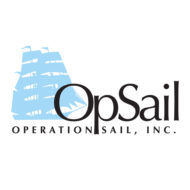Operation Sail, or simply OpSail, celebrates maritime tradition, and commemorates significant moments in history. OpSail events are coordinated by Operation Sail, Inc. — a non-profit organization founded in 1961 and endorsed by President John F. Kennedy in 1963. While OpSail events celebrate America’s history and must be approved by the United States Congress, each event is an international effort that features sailing vessels from around the world.
OpSail promotes goodwill, camaraderie, and cooperation among nations. The events also provide sail training, which teaches steadfastness, initiative, courage, leadership, and discipline. The events also give sailing enthusiasts an opportunity to gather and share their knowledge and traditions.
OpSail Events
The most notable fixtures of these events are the tall ships, with their square-rigged masts towering above the sea. However, many other smaller sailing vessels participate in the events as well.
OpSail events do not take place each year, or even on a regular schedule; this is part of what makes the events so special.
The inaugural OpSail was a tie-in with the New York World’s Fair in 1964. Tall ships and sailing vessels from around the world made their way in a parade up the Hudson River behind the USCGC Eagle.
OpSail ends with the Parade of Ships, which takes place on the Hudson River and in New York Harbor on July 4th, Independence Day.
The world has seen six examples of the OpSail Parade of Ships:
- 1964 World’s Fair Parade of Ships
- 1976 United States Bicentennial
- 1986 Statue of Liberty Centennial
- 1992 Columbus Quincentennial
- 2000 Celebration of the New Millennium
- 2012 War of 1812 and “The Star-Spangled Banner” Bicentennial
The U.S. Coast Guard cutter Eagle has been the host vessel for all six OpSail.
“Operation Sail reminds us that ships brought so many of our ancestors to the Americas, brought cultures and commodities across oceans, brought us to that critical pitch of communication and commerce that has made today’s global awareness possible. Operation Sail has allowed us to see clearly how vessels from all lands — the voyaging canoes of Polynesia, the junks and sampans of Asia, the dhows of the Arab world, the barques and full-riggers of Europe and America — connected and transformed the world.”
–Walter Cronkite
Latest News
Tall Ships

Class A
All square-rigged vessels and all other vessels over 40m (131 feet) in overall length (LOA).

Class B
Traditional-rigged vessels with an LOA of less than 40m (131 feet) and with a waterline length (LWL) of at least 9.14m (30 feet).

Class C
Modern-rigged vessels with an LOA of less than 40m (131 feet) and with a LWL of at least 9.14m (30 feet), not carrying spinnaker-like sails.






